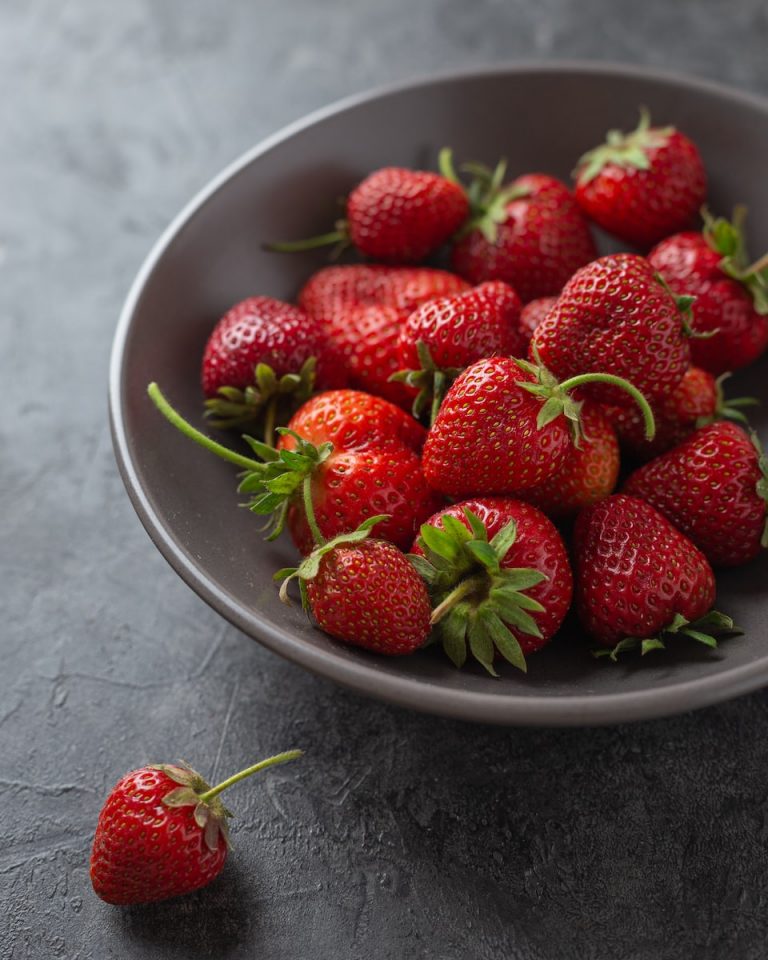As a food lover and avid gardener, I have always been fascinated by the process of growing and harvesting fresh, ripe strawberries. However, as any strawberry grower knows, it can be frustrating to wait for your berries to ripen. In this blog post, I’m going to share with you the ultimate solution for ripening strawberries quickly and easily.
Why ripening strawberries is important
Before we dive into the solution, let’s first discuss why ripening strawberries is so important. When strawberries are fully ripe, they are at their peak flavor and sweetness. Additionally, ripe strawberries are more nutrient-dense and contain higher levels of antioxidants than unripe berries.
Furthermore, it’s important to note that strawberries do not continue to ripen after they are picked. This means that the berries you harvest must be fully ripe to achieve the best flavor and nutrition.
Factors that affect the ripening of strawberries
The ripening process of strawberries is affected by several factors, including temperature, light, moisture, and the variety of the plant.
Temperature plays a significant role in the ripening process of strawberries. The ideal temperature range for ripening strawberries is between 60-75°F. Temperatures above or below this range can slow down or halt the ripening process.
Light is also an essential factor in the ripening of strawberries. The plant requires adequate sunlight to produce sugars, which contribute to the sweetness of the berries. Too little light can lead to underripe and sour strawberries.
Moisture levels also affect the ripening process of strawberries. Excess moisture can cause the berries to rot, while too little moisture can cause them to become dry and tough.
Lastly, the variety of the strawberry plant can affect the ripening process. Some varieties are bred to ripen earlier, while others may take longer to reach their peak ripeness.
How to tell if strawberries are ripe
It’s essential to know when your strawberries are ripe to ensure you are harvesting them at their peak flavor and nutrition. Here are a few ways to tell if your strawberries are ripe:
- Color: Ripe strawberries are bright red and have a uniform color throughout the berry.
- Texture: Ripe strawberries are firm but not too hard, and the flesh is juicy.
- Fragrance: Ripe strawberries have a sweet, fragrant aroma.
- Taste: Ripe strawberries are sweet and flavorful, with a balanced tartness.
Traditional methods for ripening strawberries
Before we get to the ultimate solution, let’s discuss traditional methods for ripening strawberries.
One common method is to place the strawberries in a paper bag with a ripe banana or apple. These fruits release ethylene gas, which can speed up the ripening process of the strawberries.
Another method is to leave the strawberries in a warm, sunny spot in your home. However, this method can lead to uneven ripening and may cause the berries to become overripe or moldy.
The ultimate solution: How to ripen strawberries quickly and easily
Now, let’s get to the ultimate solution for ripening strawberries quickly and easily. The solution is to use a ripening agent called calcium carbide.
Calcium carbide is a chemical compound that releases acetylene gas when it comes into contact with moisture. This gas accelerates the ripening process of fruits, including strawberries.
To use calcium carbide to ripen strawberries, follow these steps:
- Place a few pieces of calcium carbide in a small container or bowl.
- Add a few drops of water to the calcium carbide and quickly cover the container with a lid or plate.
- Let the container sit for 24 hours.
- Open the container and discard the remaining calcium carbide.
- Rinse the container thoroughly before using it again.
After following these steps, place your unripe strawberries in the container with the lid closed. The acetylene gas released from the calcium carbide will speed up the ripening process of the strawberries, and they should be ready to eat within 24-48 hours.
It’s important to note that calcium carbide is a hazardous substance and should be handled with care. Always wear gloves and protective eyewear when using calcium carbide, and store it out of reach of children and pets.
Tips for ripening strawberries at home
If you prefer not to use calcium carbide to ripen your strawberries, here are a few tips for ripening them at home:
- Store your strawberries in a cool, dry place to slow down the ripening process.
- Place a ripe banana or apple in a paper bag with the strawberries to speed up the ripening process.
- Check your strawberries daily for ripeness and discard any that show signs of mold or spoilage.
- Only harvest strawberries when they are fully ripe and at their peak flavor.
Frequently asked questions about ripening strawberries
Q: Can I ripen strawberries in the refrigerator? A: No, strawberries do not continue to ripen once they are harvested. Storing them in the refrigerator will only slow down the ripening process.
Q: Can I use calcium carbide to ripen other fruits? A: Yes, calcium carbide can be used to ripen other fruits, including bananas, mangoes, and tomatoes.
Q: Is calcium carbide safe to use? A: Calcium carbide is a hazardous substance and should be handled with care. Always wear gloves and protective eyewear when using calcium carbide, and store it out of reach of children and pets.
Conclusion
Ripening strawberries quickly and easily is essential to achieve the best flavor and nutrition from this delicious fruit. While traditional methods can be effective, the ultimate solution is to use calcium carbide to accelerate the ripening process. Remember to always handle this hazardous substance with care and follow safety precautions.
Whether you choose to use calcium carbide or traditional methods, the key to ripening strawberries successfully is to pay attention to the factors that affect the ripening process, such as temperature, light, and moisture. With these tips and tricks, you can enjoy perfectly ripe strawberries at home all season long.
Enjoy your ripe, juicy strawberries and share your experience in the comments below!


0 Comments